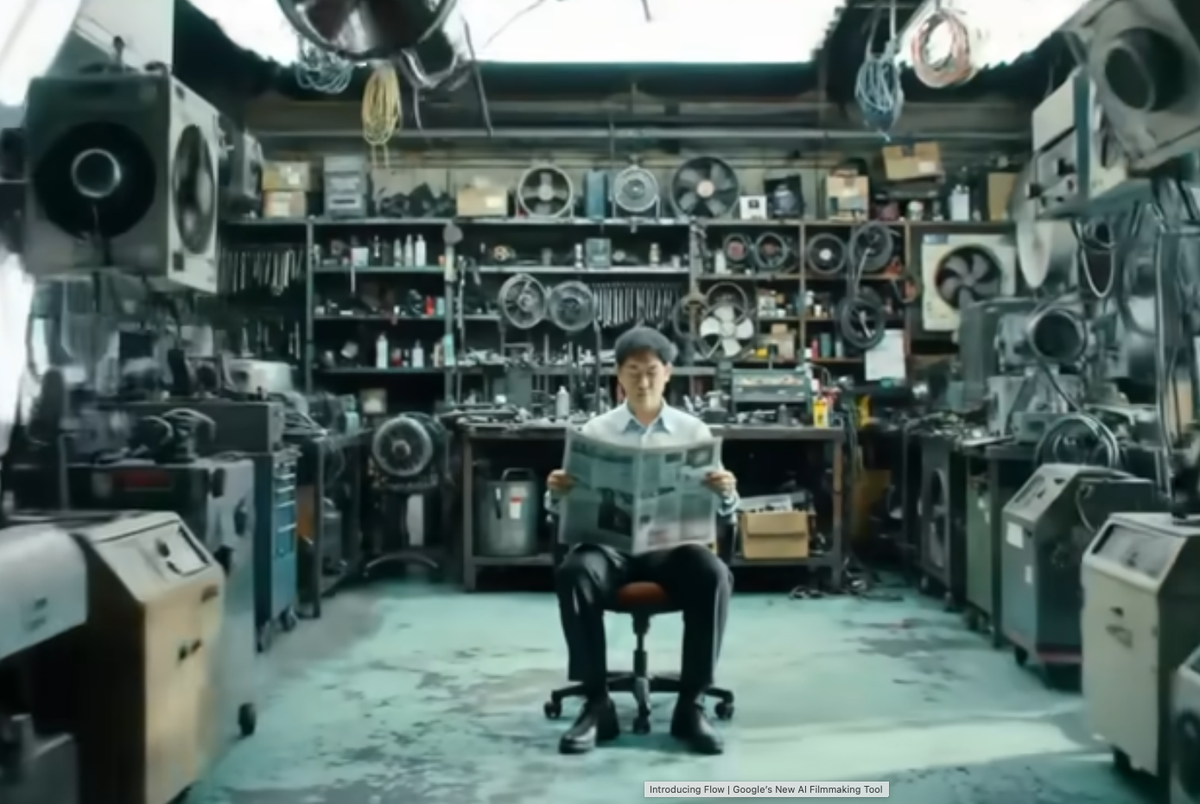A viral video starts with a comedian complaining that a recent date went bad when the woman he was with claimed we are all “prompts.” It then cuts to a series of other short segments of people debating whether they are prompts, as the tone grows increasingly dark. An angry politician promises to ban “the prompt theory” in schools. A man takes another person hostage but claims he has no control because the “prompt” is making him do it. Finally, as various people appear on screen suffering, they turn directly at the camera and beg an unseen prompt writer to “Write a new prompt.”
Of course, as you’ve already guessed, even though the people in the video look, sound, and appear to be real, they were indeed created with “prompts” by AI — specifically Google’s new VEO 3, the tech giant’s most advanced public-facing AI video model.
VEO 3 is currently available to subscribers of Google’s $250 per month AI Ultra plan, which makes it unavailable for many education budgets. Yet, it’s still technology that seems likely to influence education in positive and not-so-positive ways.
On the positive side, once the technology trickles down and becomes more available, it’s easy to imagine educational-use cases with tons of options to create videos that relate to class exercises in various subjects, such as history or STEM.
But this technology also highlights the gray area around AI use and what its impact on actual creatives might be. Beyond that, it will — troublingly — lend itself very well to deepfakes. AI videos have already been used to spread misinformation, and to bully and harass in school settings. A tool such as VEO 3 potentially makes those types of illegitimate, and in some cases criminal, uses easier to create and even harder to spot.
Here’s a closer look at everything educators need to know about VEO 3.
What Is VEO 3 and Why Is It Different Than Other Video Generators?
“We Are Not PROMPTS!” – YouTube
Watch On
VEO 3 is Google’s latest and greatest AI video generator. Combining Google’s Veo, Imagen, and Gemini AI models, VEO 3 is designed to let users create short, life-like videos with audio, and then string these videos together in longer scenes.
The tool is designed to make writing prompts for these videos easy and intuitive. This audio and ease of prompting in particular stand out when compared to other Google video tools and the competition. For example, when I used OpenAI’s Sora video generator, there was no audio, and prompting was as unpleasant as high school calculus.
But reviewers say VEO 3 not only produces amazing clips with audio, it does so with relative ease, though VEO 3 is far from perfect.
What Are Some Ways VEO 3 Can Be Used For Teaching?

A screenshot from a clip created by VEO 3 shared in a Google promo video. (Image credit: Google)
If VEO 3 becomes more widely available for less money, or if your school has a large AI budget, it doesn’t take much to come up with creative uses for it: Writers can bring their stories to life with prompts, history students can recreate scenes from events they’re studying, and biology students can model photosynthesis and assess the video’s accuracy.
VEO 3 also has a feature that lets you see exactly what prompts others used to create their videos. For the growing field of AI education and prompt writing, this is a valuable feature and one that educators might encourage their students to explore in the future.
What Are Some Concerns About VEO 3 Technology?
The History of Influencers | Google Veo 3 AI Short Film – YouTube

Watch On
VEO 3 does not yet have a tool that lets users upload an image and generate a video based on that, but that tool is available for VEO 2 and is expected to be rolled out to VEO 3 eventually. This will make VEO 3 a particularly powerful tool for generating deepfakes.
Even without this, VEO 3’s realistic videos and ease of use make it likely to increase the use of AI to spread misinformation and potentially bully and harass people. This is true for society in general, but will be amplified in school settings.
What Else Should Teachers Know?
Regardless of whether you’re a fan of AI technology or not, learning about the capabilities of VEO 3 and other AI video generators is critical. These tools are here, for better or worse, and educators and their students need AI literacy training in order to navigate a world in which what we see is not always real.
We’re not all prompts, as the video referenced at the start of this article claims, but increasingly much of what we read and see on the internet will be created from prompts, and we all should be thinking about how to navigate that.


